Drumminroe
Houses within 10km of this house
Displaying 25 houses.
Houses within 10km of Drumminroe
Displaying 25 houses.
| House name | Description | |
|---|---|---|
| Moore Hall | Built in 1795 and burnt down in 1923. The residence of George Henry Moore, MP, at the time of Griffith's Valuation, when it was valued at £45. Slater refers to it as the seat of George A. Moore in 1894. The ruin is now owned by Coillte Teoranta. |

|
| Greenhills | Greenhills was part of the estate of the Marquess of Sligo until the sale to William Livingstone in 1854 and was let to Joseph Bourke in the early 19th century. It was later occupied by Archibald Stavert who held it from William Livingstone at the time of Griffith's Valuation. It was owned by Matt Fahy in the late 1990s and is still extant. |
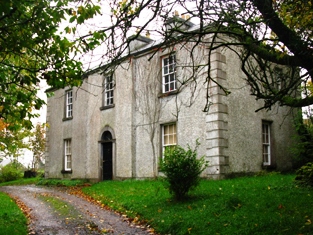
|
| Elmhall | Built by Gerald Cuff early in the 18th century, it was let to the Jordans of Murrisk in the 1770s and to a branch of the Browne family of Westport from the 1780s until the early 19th century. In 1786 Wilson refers to it as a seat of the Rt.Hon. James Cuffe. In 1837 the 1st edition Ordnance Survey map notes that it was 'in ruins'. The Irish Tourist Association File states that Elmhall is said to have been burnt in 1798. Only some fragments of walls remain at the site. |
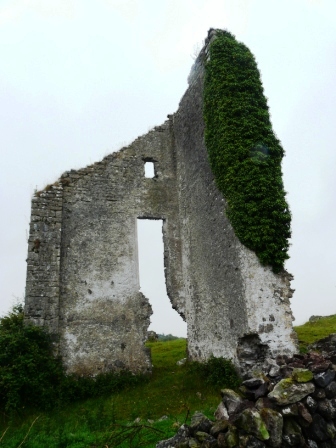
|
| Castlecarra | Granted to Sir Henry Lynch after the Restoration, it was the family's main home in county Mayo for much of the 18th century. In 1786 Wilson refers to Castle Carra as the seat of Mr. Lynch. The mansion house and offices at Castlecarra were described in 1844 by Samuel Nicholson as "now almost ruins". Castlecarra was leased to the Brownes of Castlecarra at this time and was part of their property for sale in 1852. The ruins of the original tower house are still extant but much of the surroundings are now covered by forestry. | |
| Mount Pleasant | Home of George Mahon in 1814 and of Charles G. Mahon in the 1850s when the house was valued at over £22. It is no longer extant. | |
| Ballinafad | Bence Jones states that the house was built in 1827 and was sold to the African Missionary Brothers circa 1908 by Lieutenant Colonel Llewellyn Blake of Ballinafad and Cloghballymore, county Galway. It is recorded as his seat in 1894. The Irish Tourist Association File states that the house was donated to the African Missionary Brothers by Colonel Blake and that a new wing was added in 1932. For sale in 2012. |
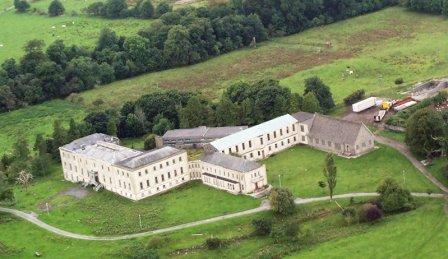
|
| Bridgemount House (Drum) | The home of the Acton family in the 19th century and the seat of G.H.Acton in 1894. At the time of Griffith's Valuation it was held in fee by George Acton and valued at £10. It was later the home of the Coyne family and is still extant and occupied. |

|
| Carnacon House | Home of the McDonnell family in the early 19th century and probably earlier as local sources suggest General James McDonnell, who fought in the 1798 Rebellion, was born there. In 1844 described by Samuel Nicholson as "neat and comfortable, prettily situated upon the lake and ornamented by thriving plantations". It was purchased by the Hughes family in the 1940s and is still in their possession. |
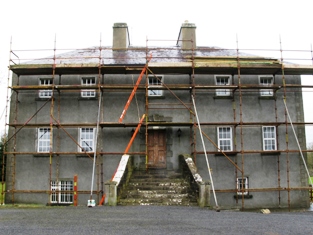
|
| Castlelucas | A house belonging to the Blakes of Ballinafad, let to Lieutenant Hugh Ryan in 1814 and to Mrs Phibbs in the 1830s who subleased to George Ormsby of the Ballinamore family. At the time of Griffith's Valuation, it was leased by Matthew Phibbs from Mark Blake and valued at £5. It is no longer extant. | |
| Clogher | According to Bence Jones this house was built circa 1798 though Wilson refers to a house at Clogher as the seat of Patrick Lynch in 1786. In 1844 Samuel Nicholson described Clogher House as "amongst the largest and the best in the Country, and appears to be kept in excellent order". Patrick C. Lynch was leasing it from Sir Robert H. Blosse at the time of Griffith's Valuation, when it was valued at £40. It was in the ownership of the Fitzgerald Kenney family at the beginning of the 20th century and is now a ruin. |

|
| Errew | An unoccupied house and offices valued at £11 were held by James Hardiman at the time of Griffith's Valuation. A school and monastery are shown on the 25-inch Ordnance Survey map of this area in the 1890s. These buildings are still extant. | |
| Fortlawn Cottage | William Mulrooney held this property in fee at the time of Griffith's Valuation when it was valued at £5. It is labelled as Fortlawn Cottage on both the 1st and 25-inch edition Ordnance Survey maps. A house is still extant at the site. | |
| Hawthorn Lodge | Mulloy writes that in 1789 this house was leased by George O'Malley from the Ellison family and that the O'Malleys lived there until the late 19th century. It was generally known as 'Lodge'. The house was sold to the Carson family in 1905. Charles O'Malley and his son, St Clair O'Malley, were agents to the Earls of Lucan. This house appears to be named Tallyhoe, the residence of Cuffe esquire, on the Taylor and Skinner map. Hawthorn Lodge is still extant and has been occupied by descendants of George O'Malley since the 1990s. |
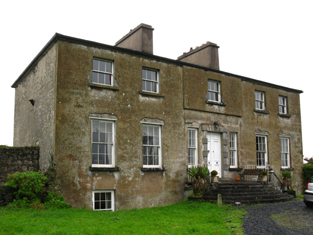
|
| Hazelrock Lodge | Valued at £5 at the time of Griffith's Valuation and held by the Honourable George Frederick Yelverton from Viscount Avonmore. The National Inventory of Architectural Heritage contends that it was built in the early nineteenth century for Barry John Yelverton, third Viscount Avonmore. It is now a ruin. |

|
| Kilboyne | Described at the time of the first Ordnance Survey as a 'good house surrounded by a neat but small demesne'. At the time of Griffith's Valuation it was held in fee by Sir Samuel O'Malley and valued at £12. A modern house exists at the site now. | |
| Kinturk | A residence of the Bourke family in the early 19th century, situated beside Kinturk Castle. In 1786 Wilson refers to it as the seat of Mr. Burke. The townland was in the possession of Rev. H.N. Ormsby at the time of Griffith's Valuation. | |
| Partry House | Bence-Jones describes the house, situated on the shore of Lough Carra, as Georgian with a Wyatt window above the porch. It is likely that it incorporates an earlier house built in the latter part of the 17th century. In 1786 Wilson mentions "Cloonlagheen" as the seat of Mr. Lynch. It was the seat of the Lynch/Blosse Lynch family for three centuries. At the time of Griffith's Valuation, it was held in fee by Henry Lynch Blosse and valued at £14. Owned briefly by David Shaw Smith in the 1990s, now the home of Lorraine O'Donoghue. |

|
| Pheasant Hill | A Sheridan home from the late 18th century to the late 19th century. Wilson, writing in 1786, refers to "Dan" as the seat of Mr. Sheridan. By the time of Griffith's Valuation it was held by John Sheridan from the Earl of Lucan's estate with a valuation of £3. It is not shown on the 25-inch map of the 1890s and modern buildings exist in the area now. | |
| Portroyal | In 1786 Wilson refers to Port Royal as the seat of Mr. Gildea. At the time of Griffith's Valuation, the townland was in the possession of James and Anthony Knox Gildea and the house was valued at £2 10s. The house is not shown on the 25-inch Ordnance Survey map of the 1890s. | |
| Rocklands | A house occupied by various agents to the Earls of Lucan, including Ellison, Davis and Larminie. In 1786 Wilson refers to it as the seat of Mr. Ellison. At the time of Griffith's Valuation, it was occupied by Neal Davis, holding from the Earl of Lucan, and valued at £15. The site appears to be occupied by a larger modern building. | |
| St Audries | An 18th century house on the shore of Saleens Lake on the outskirts of Castlebar, named after the home of the 1st Countess in Somerset, England. St Audries was leased to Owen Lindsey in 1769 and his family maintained an interest in the property and the farm at Drumsheen until the early 19th century. The Reverend Archdeacon Warburton was living in the house in 1814. By the time of the first Ordnance Survey the house was in ruins. | |
| Thomastown | Thomastown was originally leased by Christopher Bowen to Francis Lambert in 1777. It was the residence of Thomas Valentine Clendining in the first half of the 19th century. The unoccupied house was held by Charles G. Mahon at the time of Griffith's Valuation when it was valued at £30. Some buildings survive at the site. | |
| Towerhill | A late 18th century house, occupied by the Blakes until the mid 20th century, now a ruin. 1n 1894 Slater refers to it as the seat of Colonel Maurice Blake. It was valued at £60 at the time of Griffith's Valuation, when it was occupied by Valentine O'Conor Blake. |
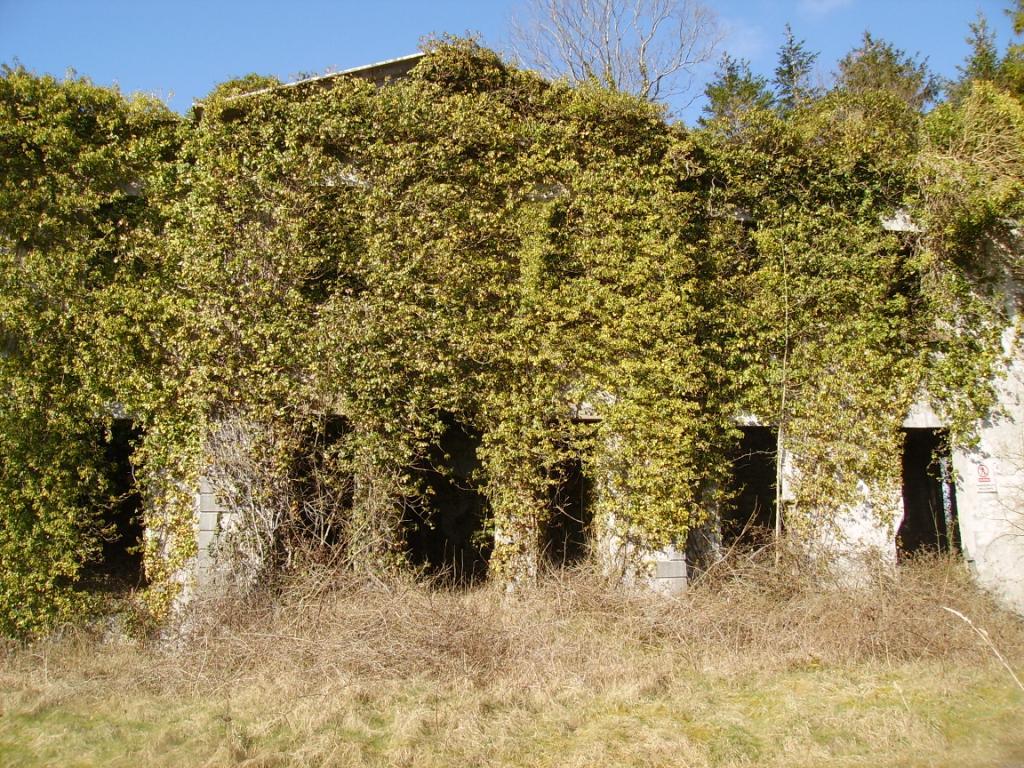
|
| Castleburke | A home of the Bourke family and their descendants. Occupied by Patrick Horan in 1814 and from 1821 James Tuohy was the tenant. The castle was in ruins by the time of the first Ordnance Survey circa 1838. It is now owned by Eamonn de Burca. | |
| Kinnewry House | Home of Charles Crotty in the second half of the 19th century. The grid reference for this property is approximate. |

